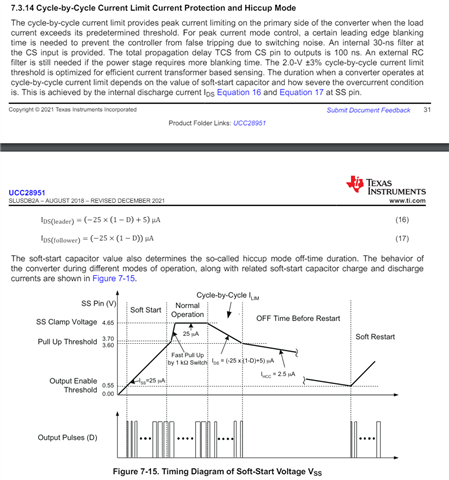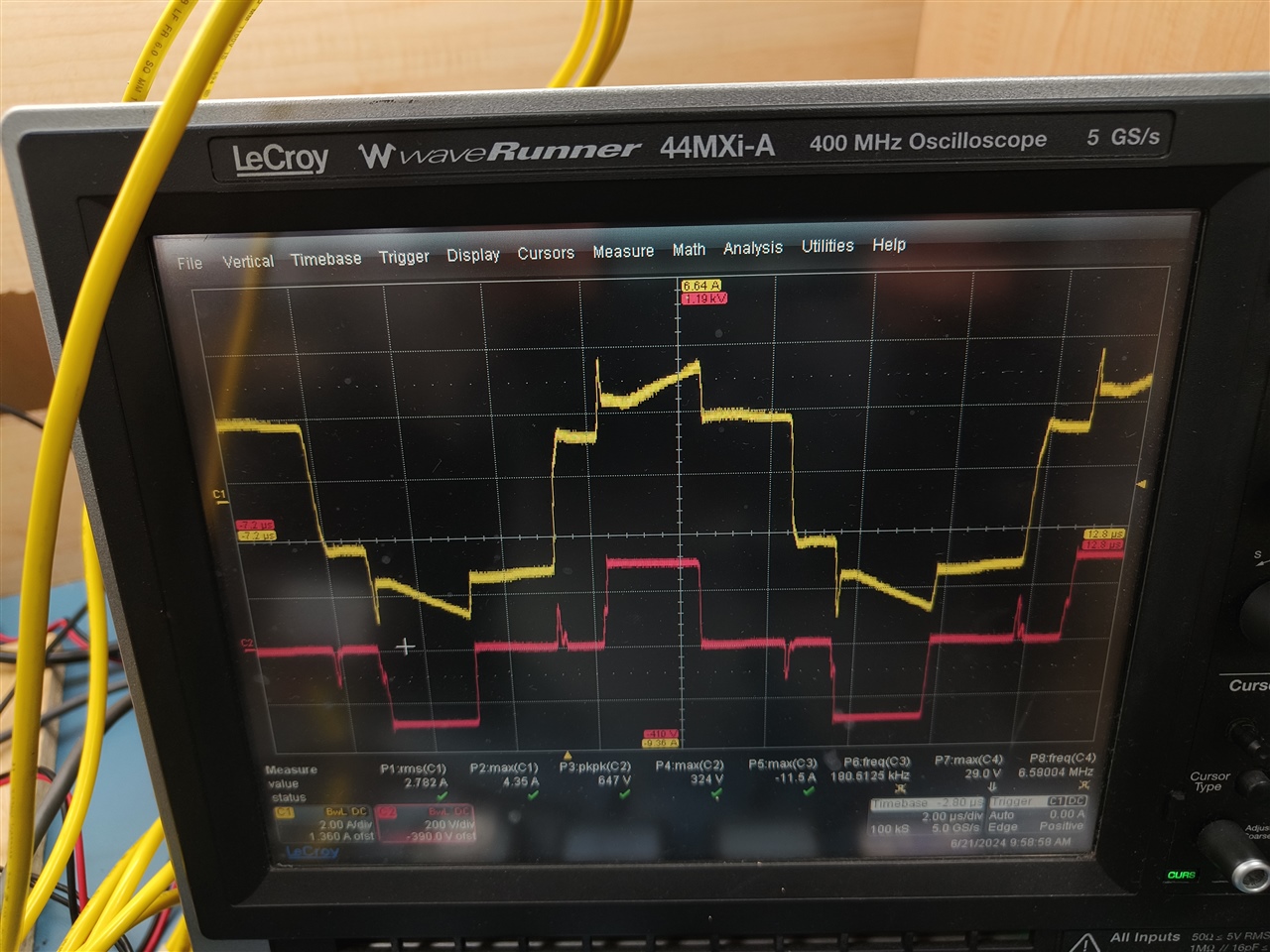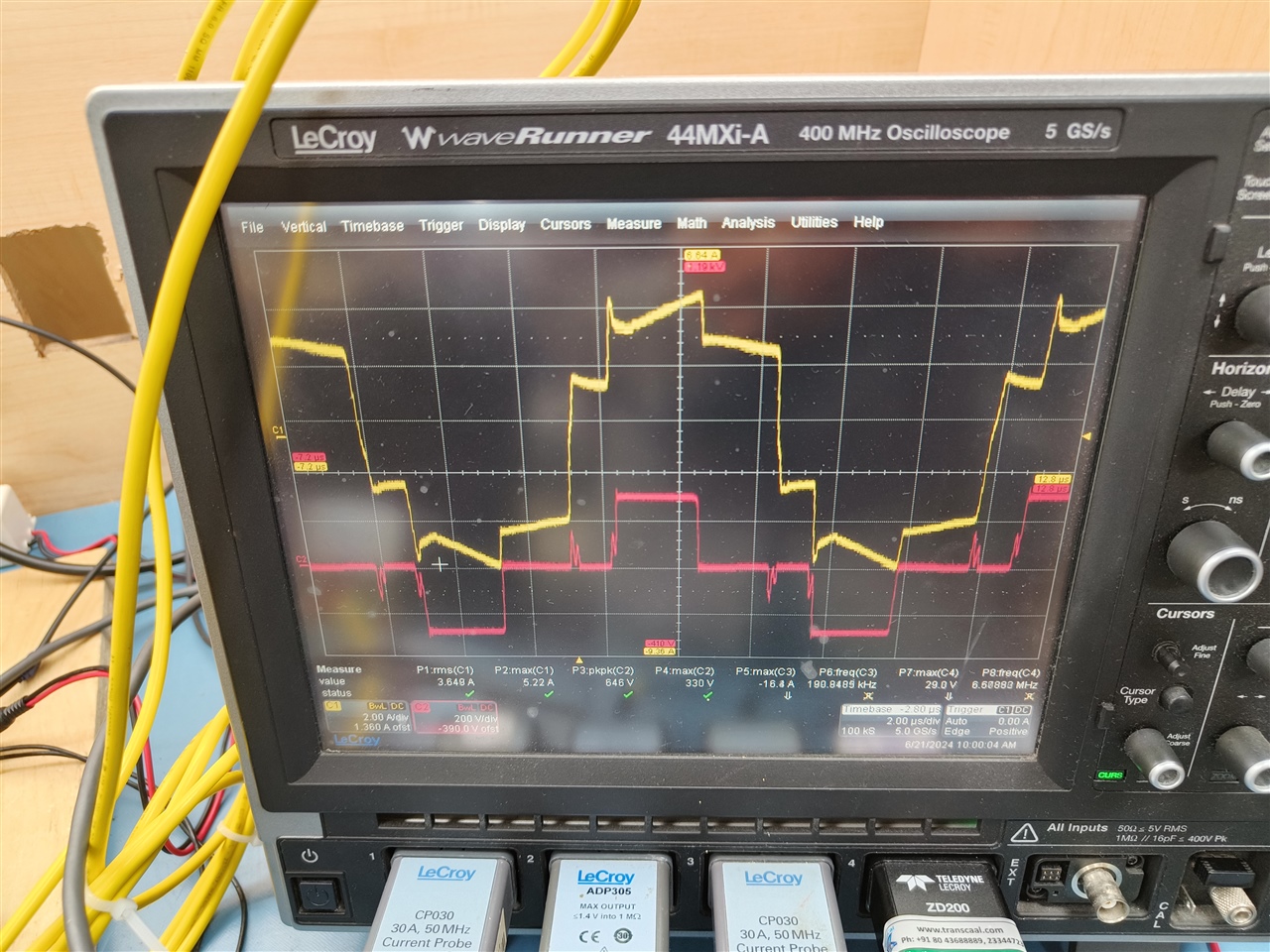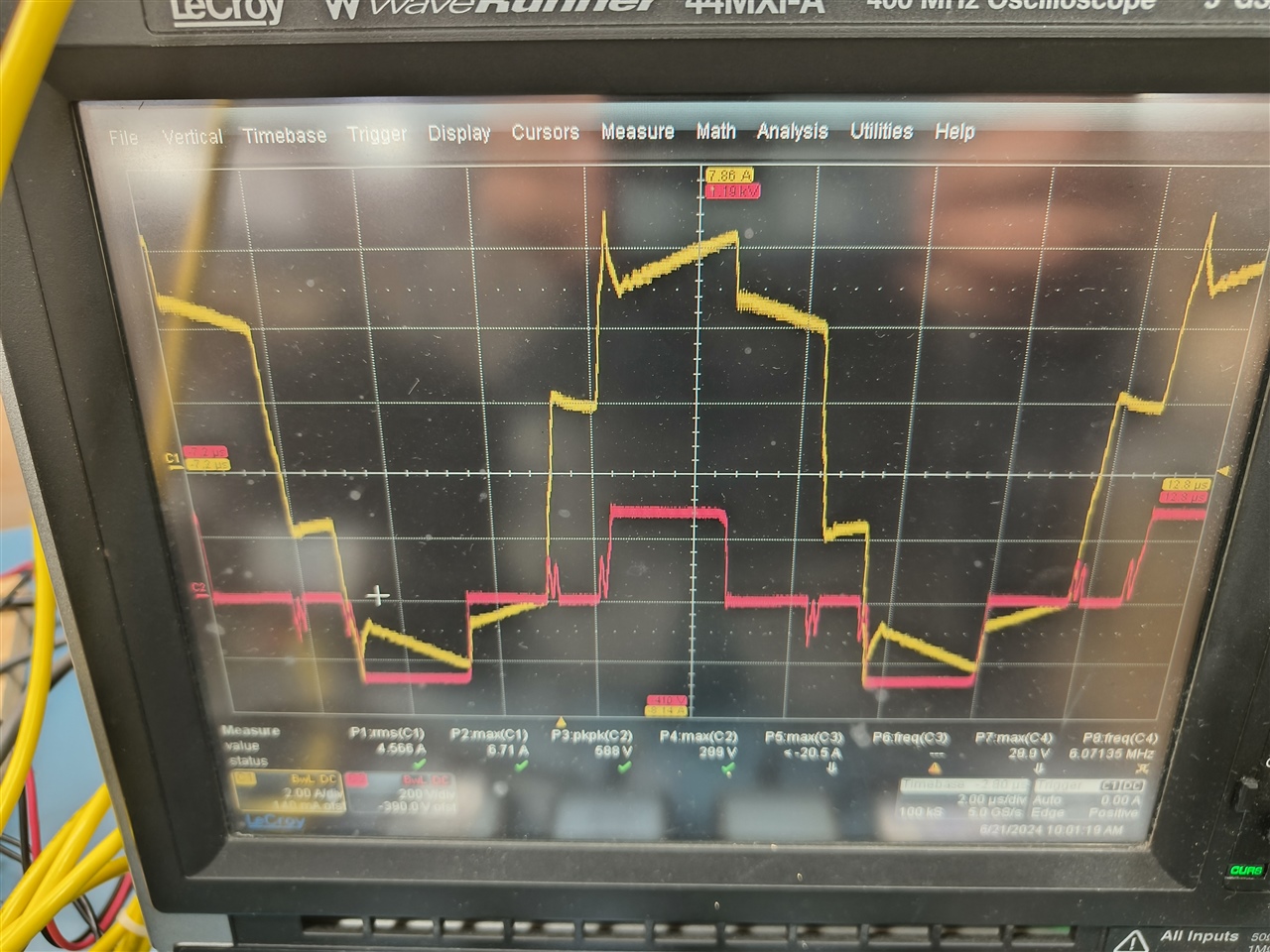Tool/software:
Hi Mike,
Schematic is reviewed by you which was shared to you by Nihil.
Vin: 280VDC
Load : 26V regulated, 10A
Transformer primary inductance: 2mH
1. Below are the primary current waveforms,
Along with inductor current. Are they correct ? Why the initial peak in current?
Yellow: primary current
Red: inductor current
Blue: transformer primary
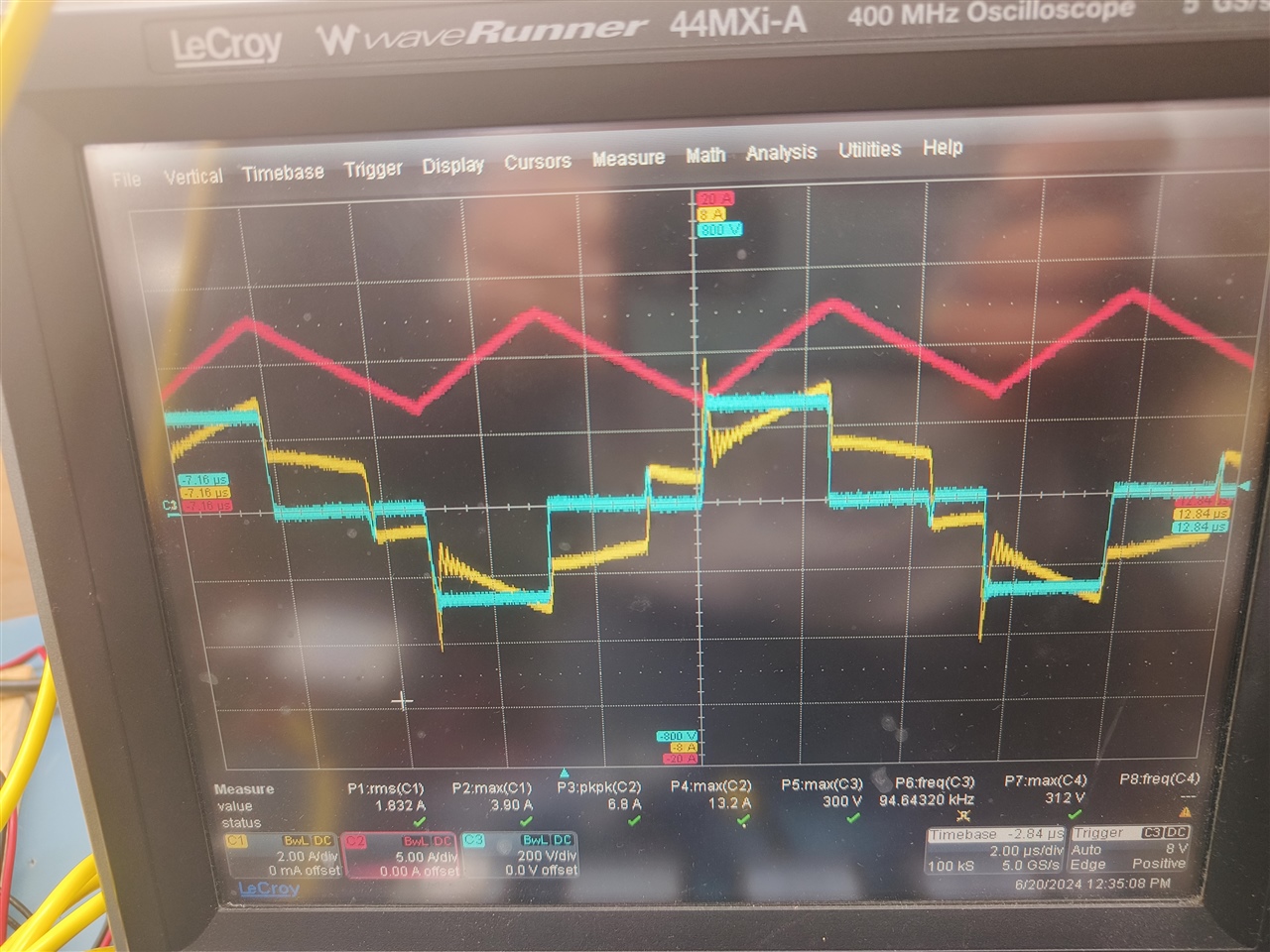
2. Output voltage waveform with ringing. The outputs are connected in series winding, regulated to 24V.

Blue: output voltage
Yellow: primary current
Green : primary gate B
Though compensation is still in progress, I tried adding higher SRF capacitors by measuring the ripple frequency ( 6 Mhz ) and also tried increasing output inductance, still that ringing didn't change. Inductor waveforms also looks clean from waveforms. Till it enters inductor I don't see any ringing.
That ringing increases with increase in load current.
One more thing which I noticed is bottom winding ( vout 2 ) didn't have ringing, only minor spikes. Tomo plan is to check both windings seperately and check whether interwinding capacitance at secondary is trouble or primary side transformer coupling capacitance is trouble ?
I WILL also check both winding seperately.
Compensation values @ present:
Cz:6.8nF
Rz: 51K
Cp: 680pF
Rsum : 91K
Your thoughts and advise ??



